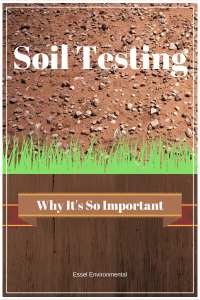What Is An ESA Phase 1 Report And When Do You Need One?


The Environmental Site Assessment Phase 1 (ESA Phase 1) is an environmental due diligence report prepared for real estate transactions such as land purchases, building purchases, leases, business purchases, new residential developments and bank loans.
Phase 1 ESA reports must be performed in general compliance with American Society for Testing and Materials (ASTM) Standard E-1527-13. This ASTM standard adheres to the Environmental Protection Agency All Appropriate Inquiries Rule, codified into the federal regulations by the EPA (40 CFR Part 312). This Phase 1 Environmental report typically required by lenders and it is highly recommended prior to purchasing commercial or industrial real estate, or prior to starting new residential developments.
Are you still awake?
When you purchase a home most lenders and insurers require things like home inspections and termite inspections in order to complete the transaction. Why? Because they don’t want to lend you money or to insure a home that is likely to require costly repairs. The ESA Phase 1 report performs this due diligence for the environmental condition of a commercial property before it changes hands.
When do you need a Phase 1 assessment?
The ESA Phase 1 report investigates the environmental conditions of commercial properties and, if no risks are found, frees a new owner from any liability under federal environmental cleanup laws. Called CERCLA or Superfund laws, these are serious regulations and liability impacts can be huge. For that reason, many lenders, insurers, municipalities and regulators require ESA Phase 1 reports for commercial property transactions. This is especially common for properties known to have been used for industrial purposes, that are old enough to predate hazardous materials restrictions, are vacant in an urban area, or are residential complexes that could have been exposed to hazardous materials.
What does the assessment involve?
A Phase 1 assessment is an investigation of a property’s current condition and historical use. Typically, it involves a visual on-site inspection with detailed photography to document conditions, a review of records for information about past ownership and uses, and a review of these uses to determine if any of them would have likely involved hazardous materials. Similar searches are done on nearby properties. Interviews with past and present building occupants, and with owners of neighboring properties are also conducted to validate past uses. An ESA Phase 1 does not typically involve any lab testing of things like paint, soil, air or moisture, though a visual inspection may indicate the presence of hazardous materials.
Once a Phase 1 report is completed, am I done?
That depends in part on the findings, and in part on the requirements for a specific transaction. If a Phase 1 report turns up any evidence of possible contamination, this may trigger a Phase 2 assessment to determine if the possible contamination in fact exists. Also, different lenders and public agencies may require additional due diligence reports. These might include:
- Hazardous Materials Survey
- Property Condition Assessment (PCA)
- Probable Maximum Loss Report:
- American Land Title Association Survey
- Soil Testing
How do I get a Phase 1 assessment?
Most Phase 1 assessments are performed by local environmental engineering consulting firms. Local experience can be important because local planning departments often have specific processes they use, and knowledge of these processes can expedite reporting. The most important thing to think about in performing a Phase 1 report is to get it done right. If there are risks associated with a property, you want to know about them as early as possible.
For more, download our free guide to Environmental Due Diligence:


